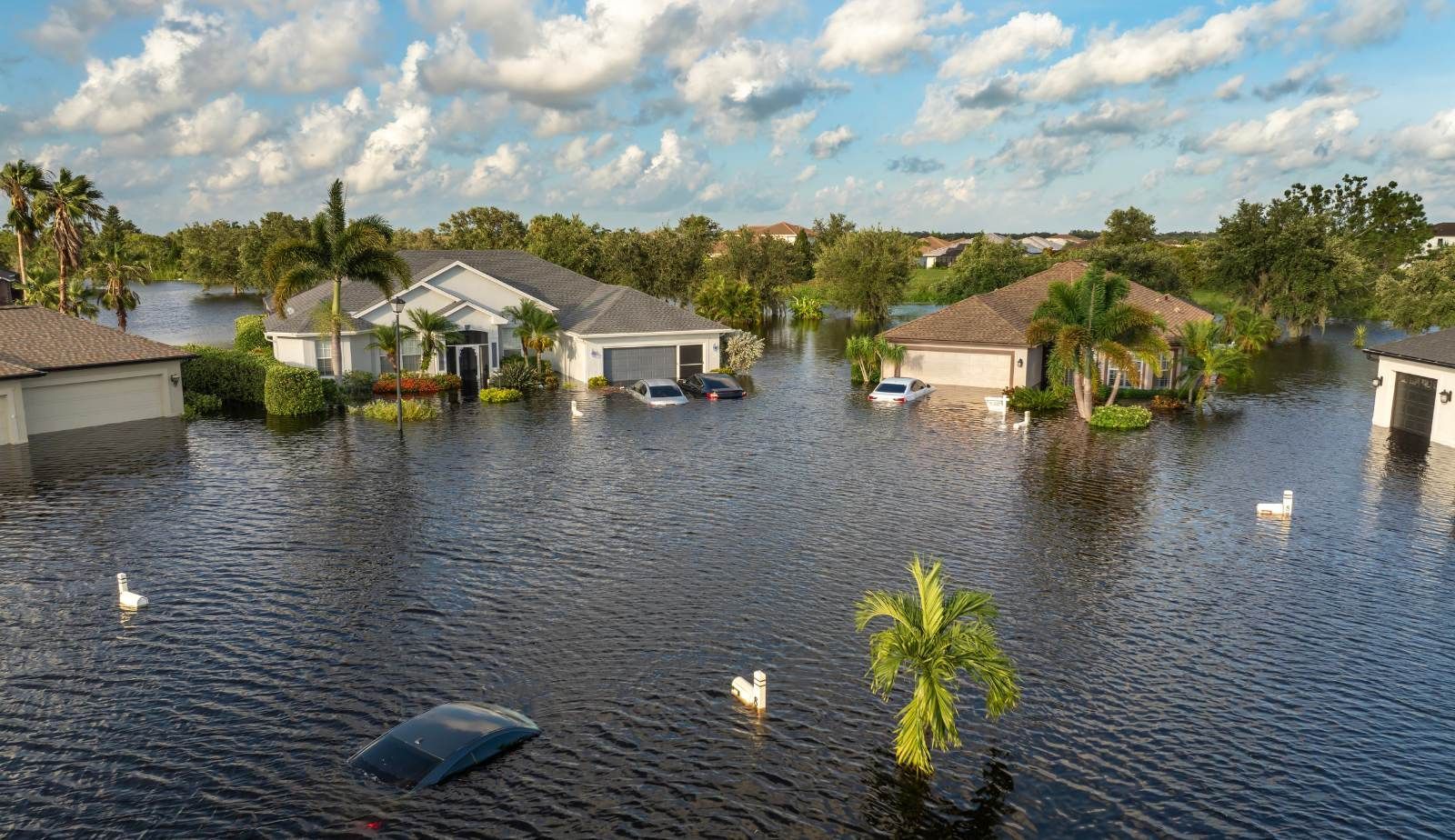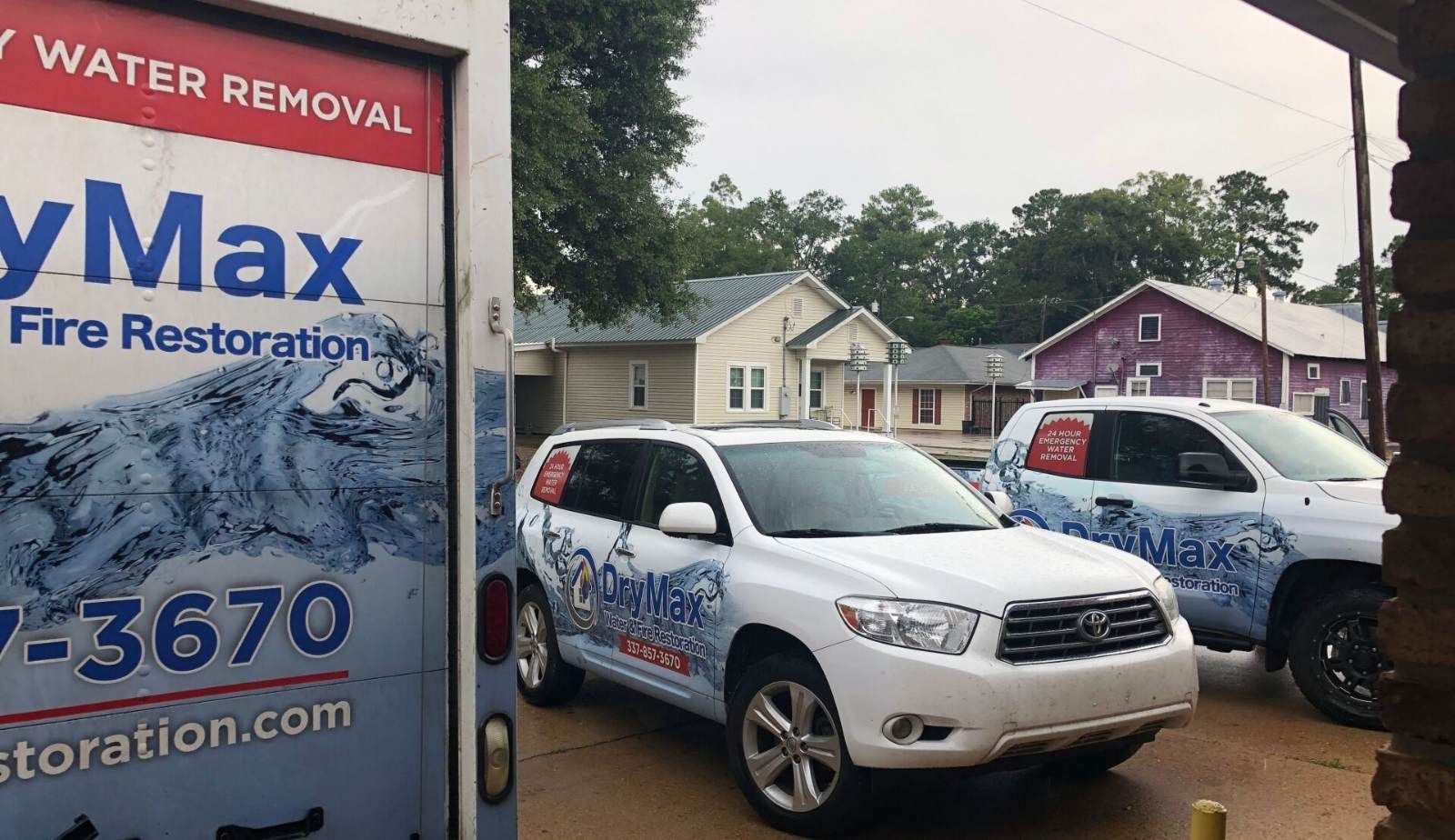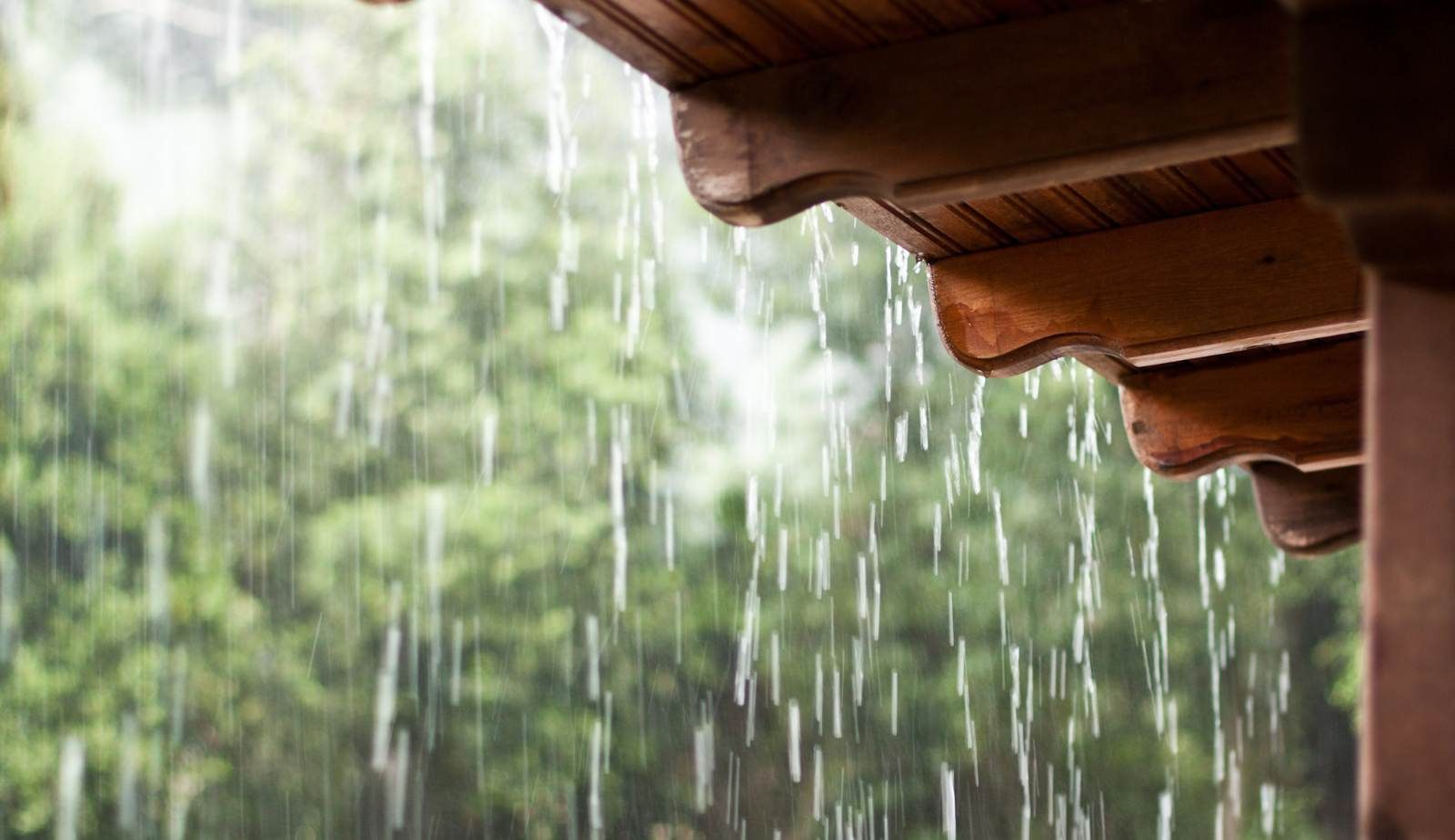Preparing Your Property for Heavy Rainfall in Louisiana: Tips from Drymax Water, Fire, Mold Restoration
Heavy rainfall poses significant risks for properties in Louisiana, especially with its unique climate and geographic challenges. Homeowners need to prioritize preparation to mitigate damage caused by flooding and excess moisture. Taking proactive steps can protect a property’s structural integrity and minimize the impact of water damage.
Key areas to focus on include ensuring proper drainage systems are in place, maintaining gutters, and utilizing landscaping to direct water away from foundations. It's crucial to inspect roofs and windows for potential leaks, as these areas are often the first points of damage during heavy storms. By addressing these aspects before rainfall events, property owners can significantly reduce the likelihood of costly repairs later.
Additionally, having an emergency response plan and knowing local restoration services, like Drymax, can provide peace of mind. These professionals are experienced in handling water damage and can assist in recovery efforts after severe weather. Being prepared means not only safeguarding the home but also ensuring a swift response to any unforeseen circumstances.
Assessing Property Vulnerabilities
When preparing a property for heavy rainfall, identifying vulnerabilities is critical. Understanding the specific areas susceptible to water intrusion and signs of structural damage can significantly minimize risks, especially in Louisiana real estate.
Identifying Areas Prone to Water Intrusion
Homeowners should start by assessing areas where water is likely to enter the property. Common vulnerability points include:
- Basements and Crawl Spaces: Evaluate for standing water or dampness.
- Roof and Gutters: Ensure gutters are clear and downspouts direct water away from the foundation.
- Windows and Doors: Check seals and caulking for integrity.
- Foundation: Look for cracks or gaps that may allow water entry.
Regular inspections can help detect issues before they escalate, allowing for timely repairs and additional protective measures.
Recognizing Signs of Structural Damage
Structural damage can degrade over time, particularly with consistent exposure to moisture. Key indicators include:
- Cracks in Walls: Vertical or horizontal fissures may signify foundational issues.
- Sagging Rooflines: A drooping appearance in the roof can indicate underlying problems.
- Mold Growth: This can develop in damp areas and suggests persistent water intrusion.
- Warped Floors: Buckling or uneven flooring may reflect moisture damage beneath the surface.
Immediate attention to these signs will prevent further deterioration and associated repair costs.
Understanding Risks Unique to Louisiana Real Estate
Louisiana properties face specific challenges due to the state's climate and geography:
- High Humidity: This can compound water damage issues, making properties more susceptible to mold.
- Heavy Rainfall Patterns: Seasonal rain can overwhelm drainage systems, leading to localized flooding.
- Flood Zones: Many properties are located in designated flood-prone areas, increasing the risk of significant damage.
Investing in flood insurance and maintaining proactive safeguards aligned with the local environment are essential steps for homeowners. Regular risk assessments tailored to Louisiana's unique conditions will help protect their investments.

Roof and Exterior Preparation
Preparing a property’s roof and exterior is vital for minimizing damage during heavy rainfall. This includes ensuring shingles are intact, siding is well-maintained, and windows and doors are secured. Each of these areas contributes to the property’s ability to withstand storms and protect its structural integrity.
Inspecting and Repairing Shingles
Regular inspection of shingles is crucial for maintaining a roof's effectiveness against heavy rain. Homeowners should look for missing, cracked, or curled shingles, as these can lead to leaks and water intrusion.
To repair shingles, individuals can replace damaged pieces or consult professionals for extensive issues. Using high-quality materials, like water-resistant underlayment, enhances durability. An intact roof not only protects from storm damage but also contributes to energy efficiency by improving insulation.
Maintaining Siding and Exterior Walls
Proper maintenance of siding and exterior walls can prevent significant damage during rainstorms. Homeowners should examine for cracks, peeling paint, or loose sections in the siding. These vulnerabilities can allow moisture to penetrate, potentially leading to mold growth and structural damage.
Applying sealants to joints and gaps can enhance water resistance. Additionally, cleaning siding surfaces helps remove debris, allowing for proper drainage during heavy rainfall. This proactive approach preserves the appearance and longevity of exterior walls.
Securing Windows and Doors
Windows and doors should be secured to prevent wind damage and water intrusion during storms. Homeowners can start by checking the seals to ensure no gaps exist that could allow water to enter. Replacing old or worn weather stripping is an effective way to maintain watertight seals.
Investing in storm shutters for windows adds an extra layer of protection against high winds and flying debris. For doors, reinforcing locks and hinges can improve security. Regular assessments and upgrades will keep these entry points fortified against severe weather.
Foundation, Gutters, and Drainage Maintenance
Proper maintenance of the foundation, gutters, and drainage systems is essential for preventing water damage in Louisiana’s heavy rain. Each element plays a crucial role in protecting property values and ensuring structural integrity.
Checking for Foundation Cracks
Homeowners should regularly inspect their foundations for cracks or signs of shifting. Cracks can indicate underlying water issues or soil erosion.
Types of cracks to monitor:
- Vertical cracks: Often a sign of settling, these may be less concerning if they are small and do not widen.
- Horizontal cracks: More serious, these suggest additional pressure and require immediate attention.
If cracks are noticed, timely intervention is important. Homeowners may need to consult a professional for assessment and possible repairs to mitigate further damage and protect property value.
Cleaning Gutters and Downspouts
Maintaining clean gutters and downspouts is vital for effective drainage. Clogged gutters can cause water to overflow, leading to water pooling around the foundation.
Homeowners should:
- Regularly clear debris: This includes removing leaves, twigs, and dirt, especially before heavy rainfall.
- Inspect downspouts: Ensure they are directing water away from the foundation, ideally at least 5-10 feet from the base of the house.
Establishing a routine cleaning schedule, typically twice a year or after significant storms, can help prevent costly water damage.
Redirecting Water Away from the Property
Effective drainage reduces the risk of water pooling near the foundation. Several methods exist for redirecting water.
Recommended strategies include:
- French drains: These systems collect and redirect excess water away from the property.
- Swales: Shallow ditches can help channel water away from critical areas.
Furthermore, proper yard grading can prevent water from flowing toward the home. Ensuring that landscape features promote adequate water runoff maintains the foundation's integrity and aids in preserving property values. Regularly assessing drainage systems is key to long-term protection.
Preventing Water and Mold Damage
Effective prevention of water and mold damage is crucial for homeowners, especially during heavy rainfall. Taking proactive steps can minimize the risk of mold infestations and structural issues.
Recognizing Early Signs of Mold Growth
Detecting mold growth early is vital for effective remediation. Homeowners should look for visible signs, such as discoloration on walls, ceilings, and floors.
Unusual musty odors can also indicate mold presence, even if it's not yet visible. Regular inspections in damp areas like bathrooms, basements, and kitchens can help catch early signs.
Keeping an eye out for water stains or pooling water is essential. These signs often precede mold growth and can indicate issues with plumbing, roofing, or insulation. Swift action can prevent extensive damage.
Maintaining Indoor Ventilation
Proper ventilation can significantly reduce the likelihood of mold proliferation. Homeowners should ensure that areas prone to moisture, such as bathrooms and laundry rooms, are well-ventilated.
Using exhaust fans during and after activities that produce humidity, like showering or cooking, can help manage moisture levels. Keeping windows open when possible also improves air circulation, especially in drier weather.
It is beneficial to use dehumidifiers in high-humidity areas to maintain optimal moisture levels. Ideal indoor humidity should range between 30% and 50%. Regular maintenance of HVAC systems also supports better air quality and limits mold growth.
Controlling Indoor Humidity
Maintaining optimal humidity levels indoors is critical for preventing mold and mildew. Homeowners should regularly monitor humidity levels, especially after heavy rainfall.
Using hygrometers can help track indoor moisture. If indoor humidity exceeds 60%, it’s essential to take corrective action.
Implementing waterproofing measures in basements and crawl spaces will limit moisture infiltration. Ensuring gutters and downspouts direct water away from the foundation is also important.
Incorporating moisture-absorbing materials, such as silica gel or calcium chloride, can assist in reducing humidity levels. Regular maintenance and inspections will help keep indoor environments dry and discourage mold growth.
Immediate Actions During Heavy Rainfall
When heavy rainfall occurs, immediate actions can help mitigate damage to properties in Louisiana. These steps focus on securing structures, managing water intrusion, and initiating water removal.
Emergency Board-Up and Temporary Repairs
To prevent further damage, emergency board-up is essential. She can use plywood sheets to cover broken windows and openings. This action protects the interior from rain and debris, reducing the risk of additional water damage.
- Securely attach the plywood with heavy-duty screws.
- Check doors for gaps; use weather stripping as a temporary seal.
As a precaution, inspect the roof for leaks, and apply tarp as needed. This can prevent water from seeping through compromised areas, helping to maintain structural integrity until a professional assessment can occur.
Managing Sudden Water Intrusion
In the event of sudden water intrusion, quick action is critical. She should identify the source of water, especially if it is due to burst pipes or overflow from drainage systems. This involves:
- Shutting off the water supply to prevent further flooding.
- Clearing gutters and downspouts to ensure proper drainage and reduce overflow.
If necessary, create makeshift barriers using sandbags to redirect water away from entrances or vulnerable areas. Regular monitoring of basement levels may be needed to manage inflow effectively.
Water Extraction and Removal
Once water has entered the property, swift extraction is vital to minimize flood damage. This can be done using:
- Sumps pumps for basements and low-lying areas.
- Wet vacuums to remove residual water from floors and carpets.
It is important to act quickly to reduce saturation levels and prevent mold growth. After extraction, ensure thorough drying of affected areas. She can utilize fans and dehumidifiers to facilitate this process.
Taking these immediate actions can significantly reduce the potential for extensive damage during and after heavy rain.
Health Risks and Mold Exposure
Mold exposure poses significant health risks, particularly in areas affected by heavy rainfall. Understanding the symptoms and long-term implications of mold exposure is crucial for residents in Louisiana, where humid conditions can exacerbate these issues.
Recognizing Symptoms of Mold Exposure
Individuals exposed to mold may experience a variety of symptoms. Common signs include:
- Respiratory problems: Coughing, wheezing, and difficulty breathing.
- Sinusitis: Inflammation of the sinuses leading to congestion and pressure.
- Allergic reactions: Sneezing, itchy eyes, and skin rashes.
People with pre-existing conditions, such as asthma or compromised immune systems, may face heightened risks. Recognizing these symptoms early can enable prompt action, minimizing potential health complications.
Preventing Respiratory Infections and Sinusitis
Effective prevention strategies can reduce the likelihood of respiratory infections and sinusitis related to mold exposure. Key measures include:
- Humidity control: Maintaining indoor humidity below 50% using dehumidifiers.
- Proper ventilation: Ensuring adequate airflow in kitchens, bathrooms, and attics to minimize moisture.
- Regular inspections: Checking for leaks, water damage, or mold before they escalate.
Implementing these practices can significantly decrease mold growth, limiting the associated respiratory health threats.

Addressing Long-Term Health Issues
Long-term exposure to mold is associated with serious health concerns, including chronic respiratory issues and potential brain disorders. These may manifest as:
- Persistent cough or asthma: Continuous exposure can lead to long-lasting respiratory challenges.
- Neurological effects: Some studies suggest correlations between mold exposure and cognitive issues, impacting memory and focus.
Long-term health effects vary among individuals and can depend on genetic predispositions and overall health. It is advisable for anyone experiencing ongoing symptoms to seek medical evaluation, focusing on mold's potential impact on health.
Restoration and Remediation Services
In Louisiana, heavy rainfall can lead to severe property damage, necessitating professional restoration and remediation services. Addressing water damage and mold growth promptly is essential for maintaining a safe environment.
Professional Water Damage Restoration
Water damage restoration services are crucial after heavy rainfall. These services typically include water extraction, drying, and restoration. Companies like Drymax Water, Fire, Mold Restoration specialize in these processes, ensuring homes return to their pre-damage conditions.
The restoration process begins with a thorough assessment of the damage. Technicians use advanced equipment such as dehumidifiers and industrial fans to remove moisture effectively. They also check for hidden water intrusion points, which may require additional remediation efforts.
Timeliness is critical in water damage restoration. Delaying these services can lead to more extensive repairs and health risks associated with mold growth. Certified companies provide quick responses to mitigate such risks.
Mold Remediation After Floods
Mold remediation is a vital service following flooding. Mold thrives in damp environments, making it essential to address any water damage swiftly. Experienced professionals identify affected areas and contain mold outbreaks to prevent further spread.
The remediation process involves removing contaminated materials and treating surfaces with specialized solutions. This ensures that mold spores are eliminated and do not return. Air quality testing may also be conducted to confirm effective remediation.
Preventative measures, such as improving ventilation and using dehumidifiers, play a role in reducing future mold risks. By utilizing certified services, property owners can protect their health and preserve their investments.
Selecting a Certified Restoration Company
Choosing a certified restoration company is essential for effective damage control. Homeowners should look for companies with industry certifications, such as IICRC, which indicates compliance with established standards.
Factors to consider include the company's response time, experience, and customer reviews. A solid reputation in the community, like that of Drymax Water, Fire, Mold Restoration, can provide assurance of quality service. It is also wise to check if the company offers a comprehensive range of services, including fire damage restoration and mold remediation.
In the event of water damage, the right restoration company can significantly affect recovery speed and quality, ensuring homes remain safe and habitable.
Insurance and Property Value Considerations
Understanding insurance and property value considerations is crucial for homeowners in Louisiana facing heavy rainfall threats. Insurance claims, coverage details, and the consequent impact on market desirability can all influence how homeowners manage their properties.
Filing Insurance Claims for Property Damage
When heavy rain results in property damage, filing an insurance claim is typically the first step for homeowners. It's essential to document the damage thoroughly. Photographs and written descriptions can support a claim and illustrate the extent of the loss.
Homeowners should report the damage to their insurance provider promptly. Understanding the claim process can streamline this experience. Knowing what types of damage are covered under the policy, such as water intrusion or mold, is vital for an effective claim.
Understanding Homeowners Insurance Coverage
Homeowners insurance policies may vary significantly regarding water damage coverage. Often, policies cover sudden and accidental water damage, but exclusions might exist for flooding due to heavy rainfall.
Homeowners should review their policies to identify coverage specifics. Additionally, they may need a separate flood insurance policy, especially in flood-prone areas. Keeping the policy updated, particularly after home renovations or purchasing valuable items, ensures adequate protection.
Impact of Damage on Market Desirability
Water damage affects property values significantly. Homes with a history of water intrusion or mold issues may struggle to attract potential buyers. It is crucial to address damage promptly to prevent long-term issues that can decrease market desirability.
Homeowners should be proactive about maintenance and repairs. Regular inspections and remediation of potential water damage can positively impact property value. Properties in well-maintained condition often command higher prices, highlighting the importance of addressing any water-related issues efficiently.
Frequently Asked Questions
Property owners often seek detailed guidance on how to prepare their homes for heavy rainfall in Louisiana. This section addresses key concerns about waterproofing, foundation protection, mold prevention, storm preparations, assessing damages, and emergency preparedness.
What are the best methods for waterproofing my home in Louisiana?
To waterproof a home, landscaping should slope away from the foundation. Installing gutters and downspouts will direct rainwater away effectively. Consider using waterproof sealants on basement walls and foundation cracks to prevent water intrusion.
How can I protect my property's foundation from heavy rain damage?
Regularly inspect the foundation for cracks and sealing them promptly can help maintain its integrity. Adding a drainage system around the foundation, such as French drains, can significantly reduce water accumulation. Installing sump pumps is another effective measure to prevent flooding in basements.
What are critical steps to take to prevent mold growth after floods?
After a flood, it is vital to dry out affected areas within 24-48 hours to inhibit mold growth. Use fans and dehumidifiers to reduce moisture. Clean and disinfect all surfaces with appropriate solutions to ensure safety and prevent mold proliferation.
Which areas of my property should I prioritize when preparing for a storm?
Focus on low-lying areas where water tends to pool and ensure they have proper drainage. Windows and doors should be secured with storm shutters or plywood. Additionally, inspect and clear gutters and downspouts to ensure they are not obstructed.
How do I safely assess and repair water damage following a severe rainfall?
First, ensure that the power supply is turned off to avoid electrical hazards. Document damage through photos for insurance purposes. Carefully remove waterlogged materials and clean the area thoroughly before starting any repairs.
What should be included in an emergency preparedness kit for flood situations?
An emergency kit should contain essential items like bottled water, non-perishable food, flashlights, batteries, first aid supplies, and important documents. Additionally, include a battery-powered radio for weather updates and a whistle to signal for help if necessary.
You might also like
DryMax Restoration Blogs





